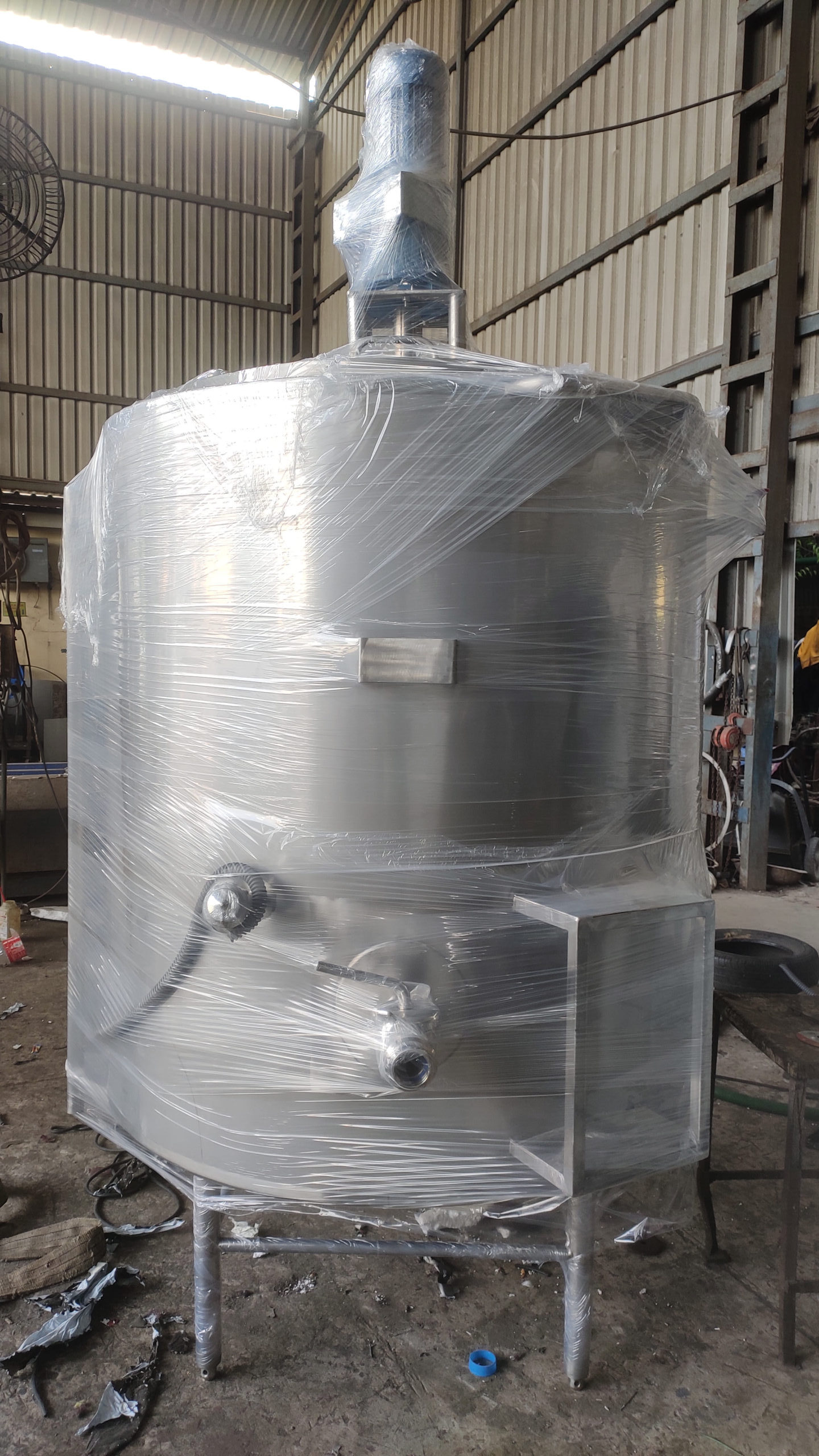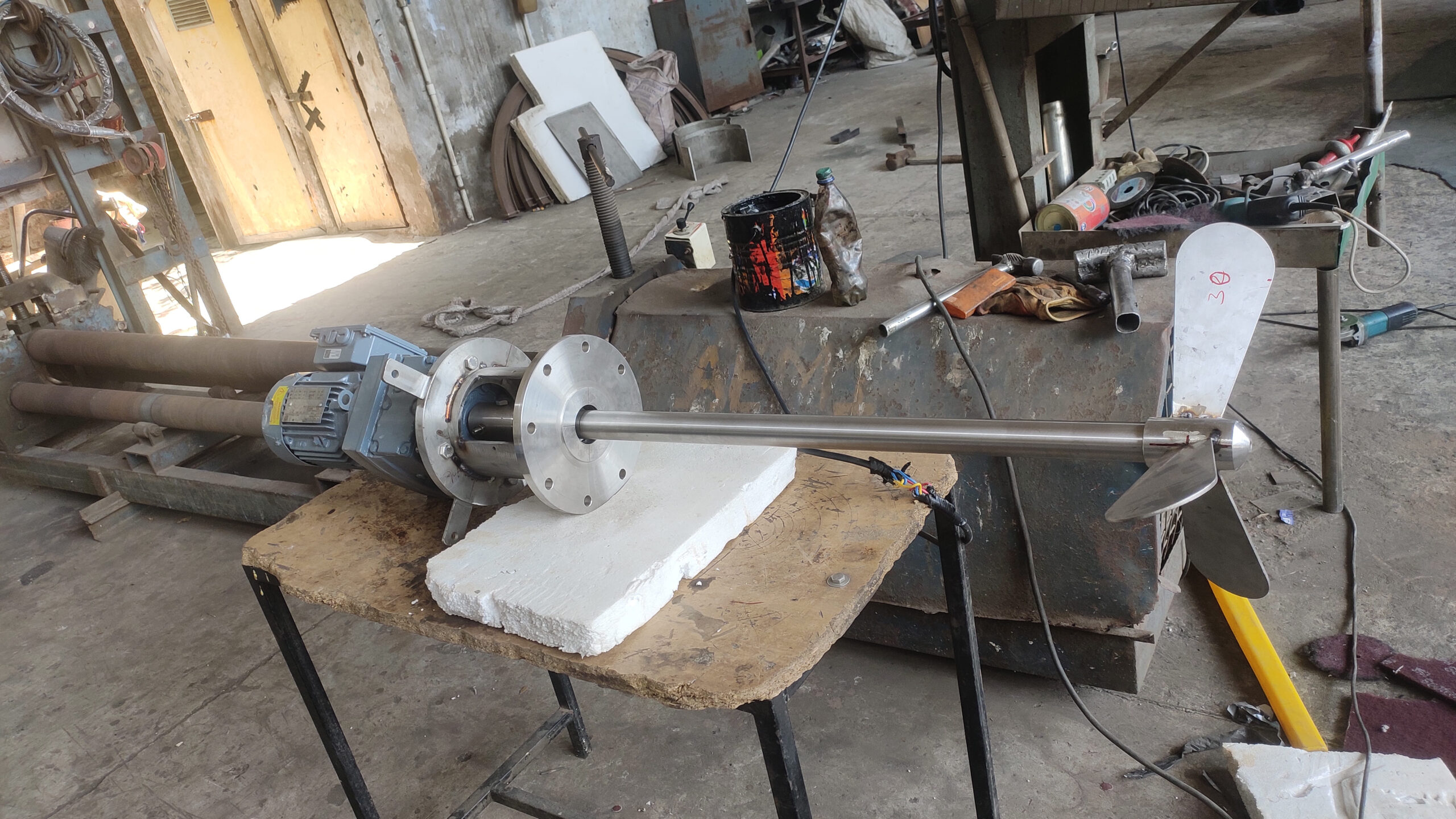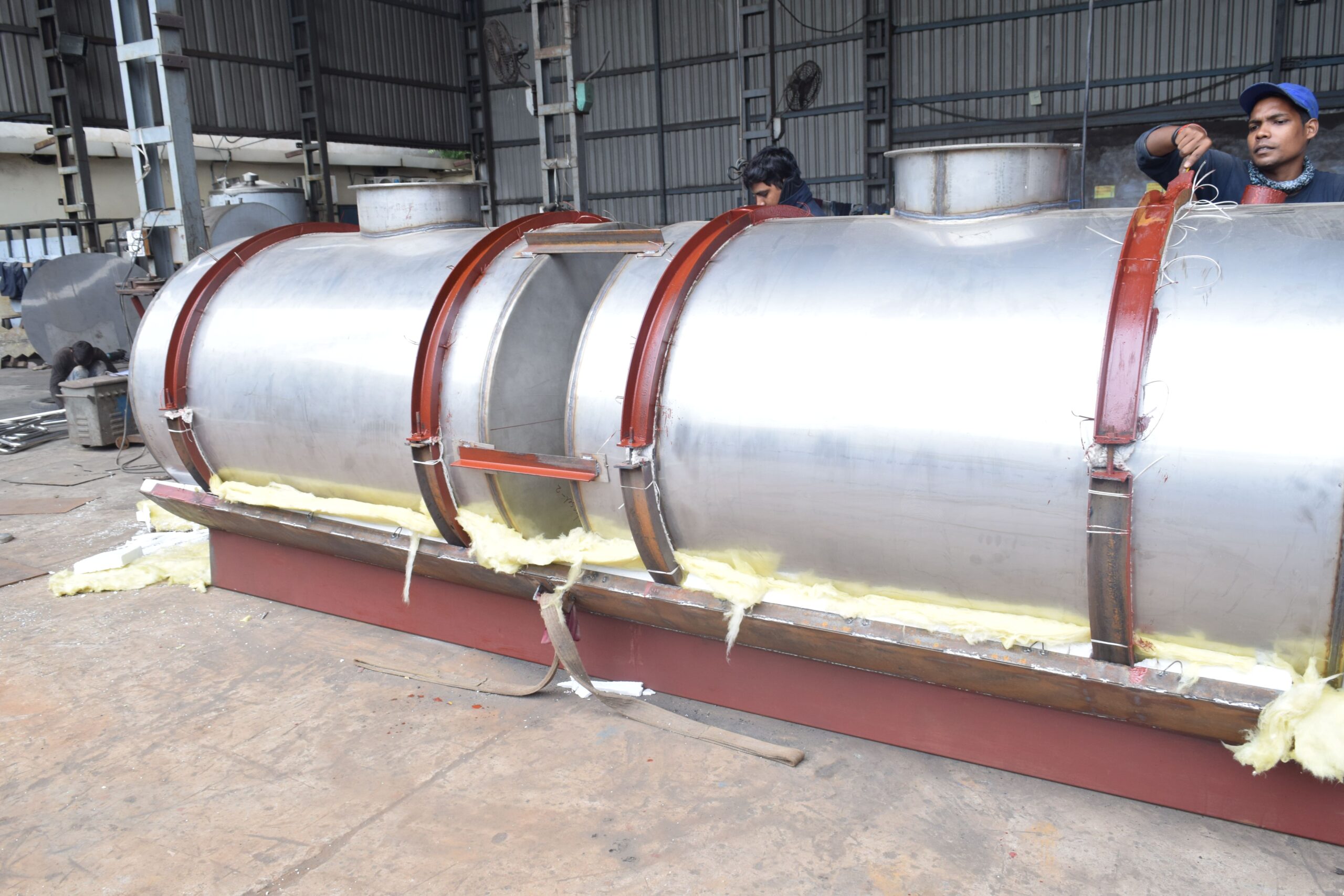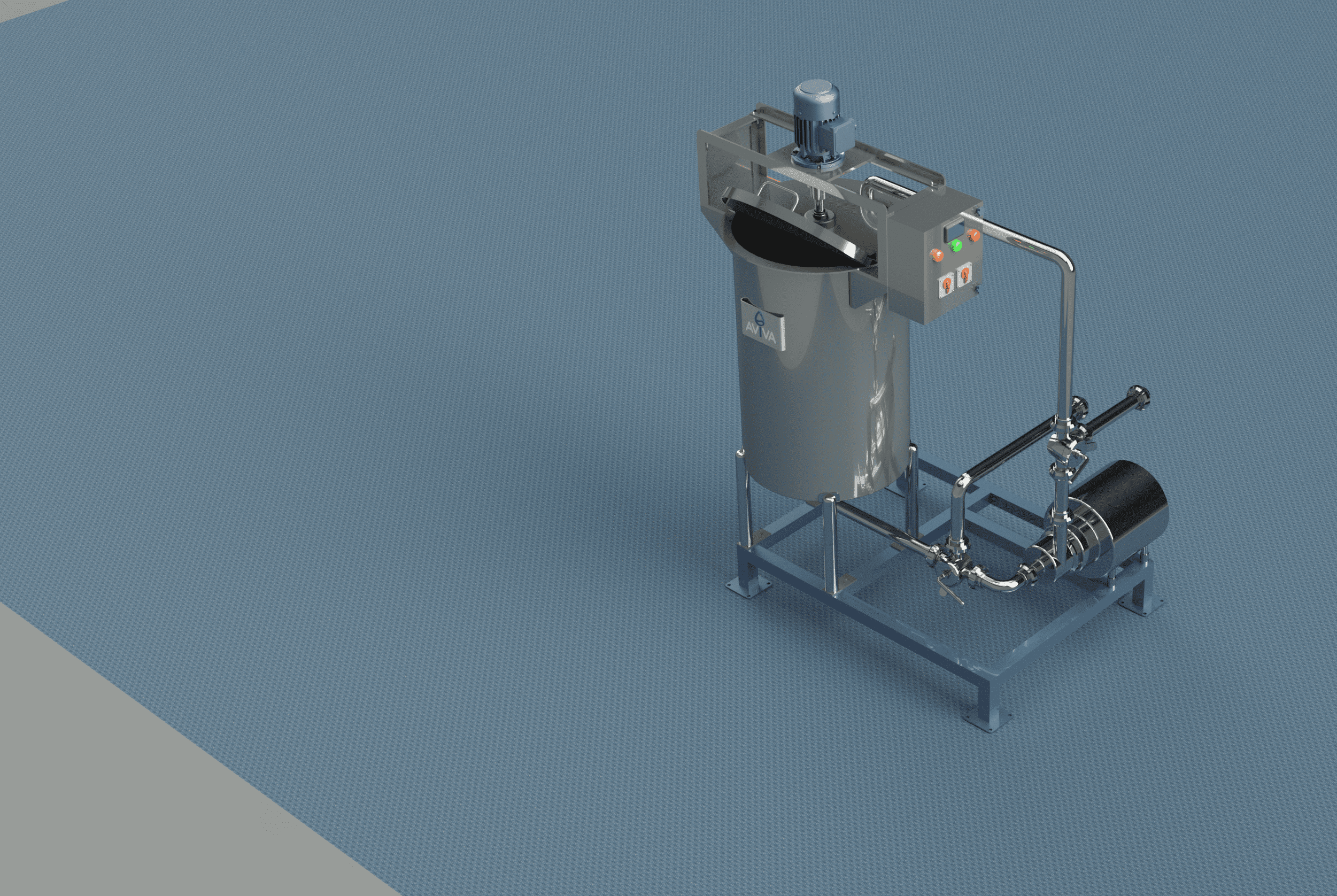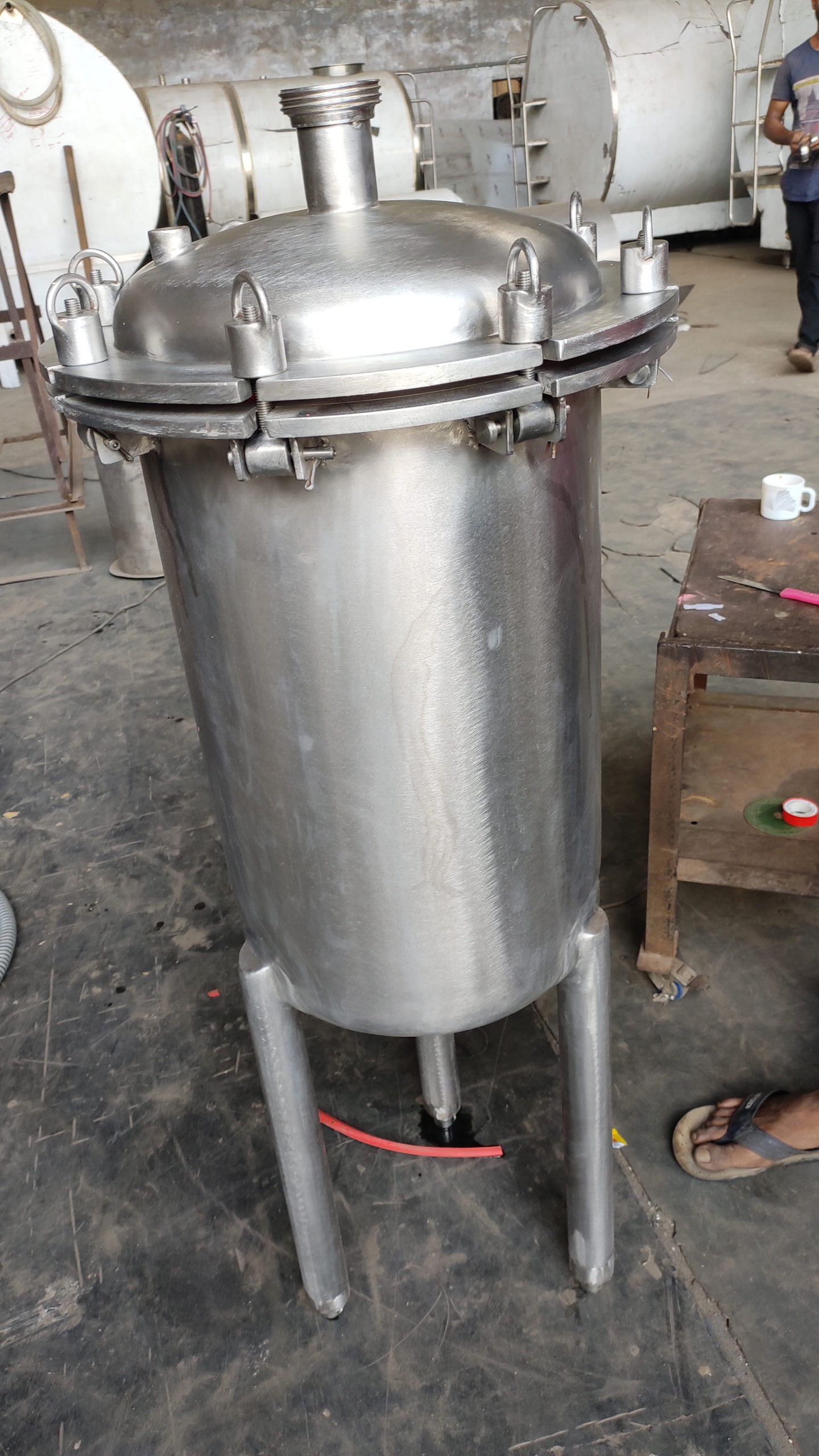Ghee Boiler
A ghee boiler is a specialized vessel used in the production of ghee, a clarified butter commonly used in South Asian cuisine. Here’s a general description of a ghee boiler:
Design: Typically, a ghee boiler is a large, cylindrical vessel with a capacity ranging from small-scale to industrial sizes, depending on production needs.
Function: The primary function of a ghee boiler is to melt butter and clarify it through a heating process. This involves heating the butter until it melts completely and then allowing it to simmer. During simmering, the milk solids separate and settle at the bottom, while the clarified butter (ghee) rises to the top.
Usage: Ghee boilers are used in commercial kitchens, food processing industries, and traditional ghee-making setups to produce ghee efficiently and hygienically.
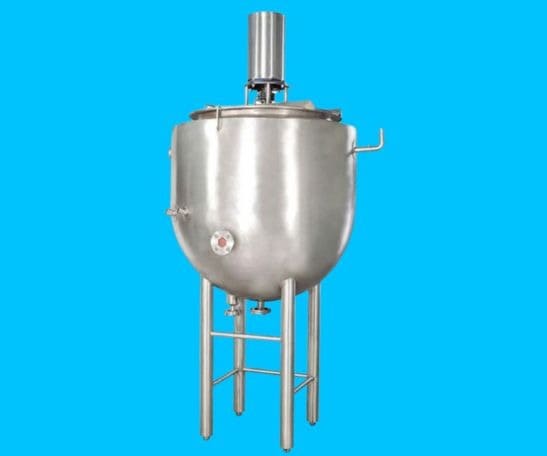
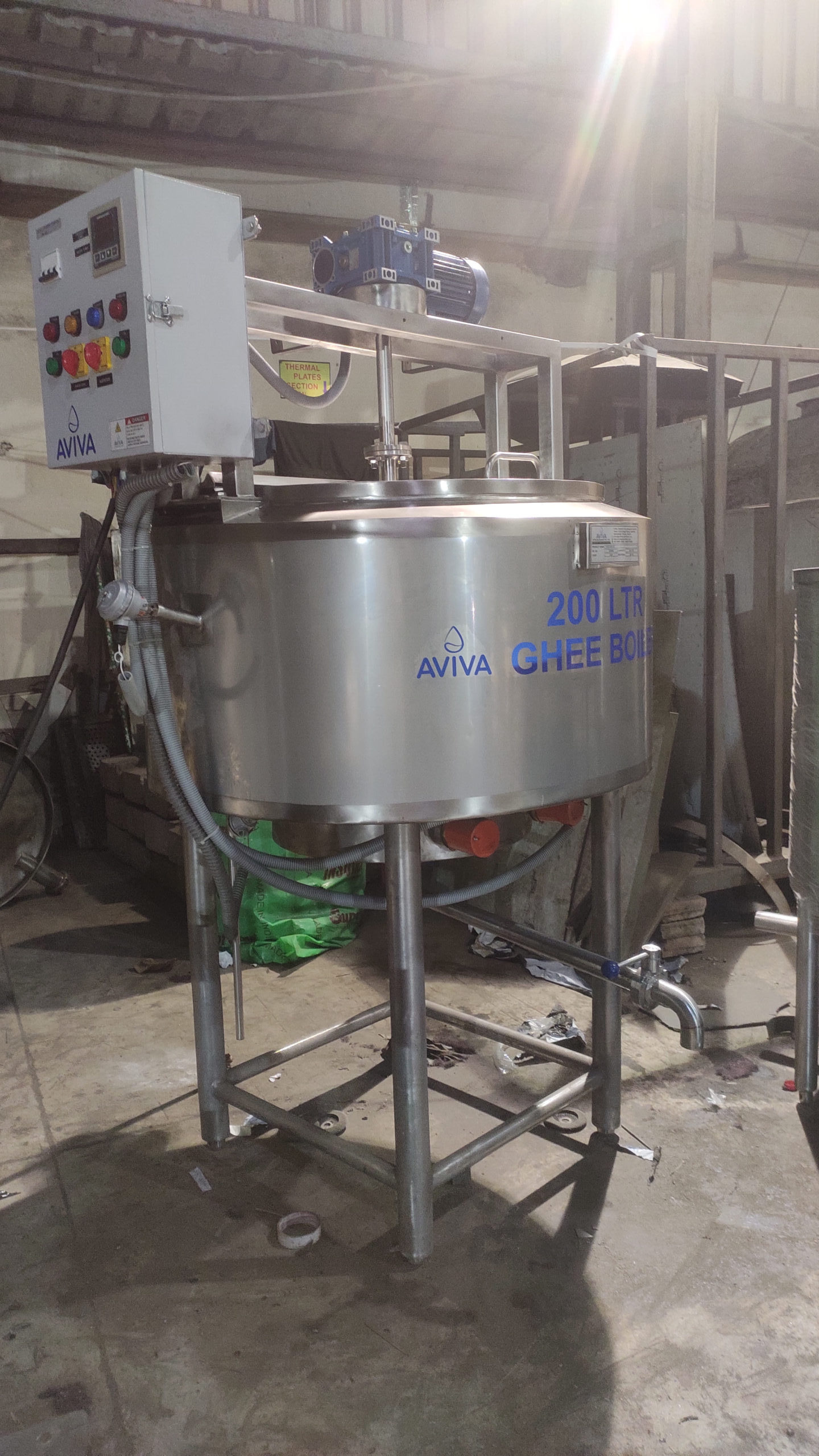

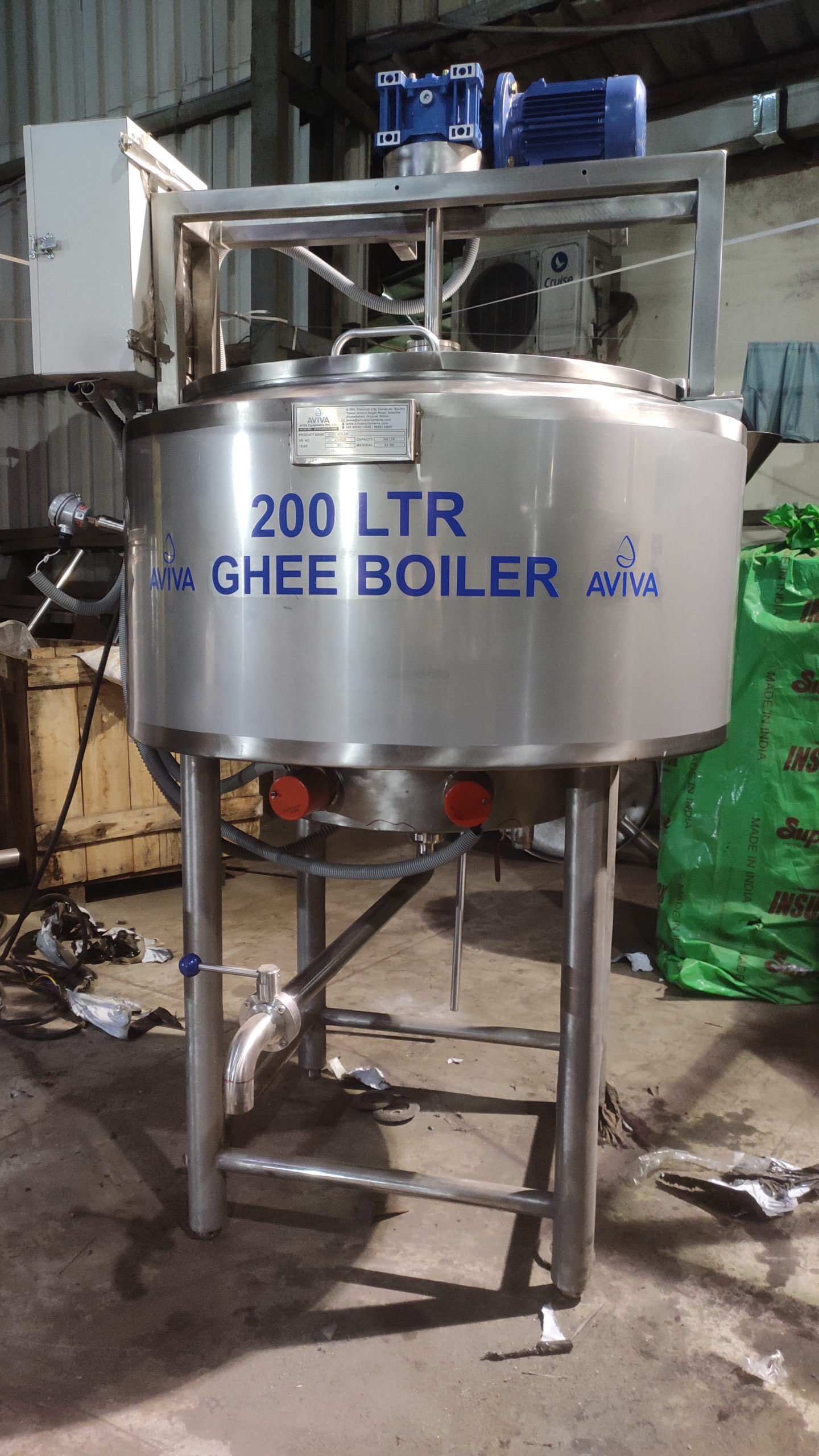
Features
- Heating Mechanism: It may have a heating element or be designed to be heated indirectly through steam or hot water circulation.
- Stirring Mechanism: Some boilers have mechanisms for stirring to ensure uniform heating and prevent burning.
- Temperature Control: Precise temperature control is important to ensure that the butter is heated to the right temperature without scorching.
- Sanitization: Optional step using a sanitizing agent to kill microorganisms
- Final rinse: Purified water or a final rinse solution is used to ensure all cleaning agents are removed.
Overall, a ghee boiler plays a crucial role in the production process of ghee, ensuring that the clarified butter is produced consistently and at scale.


